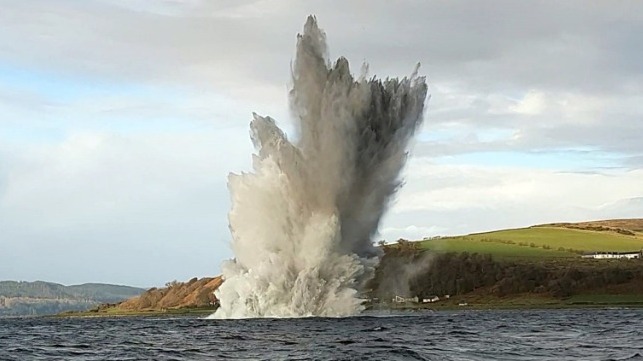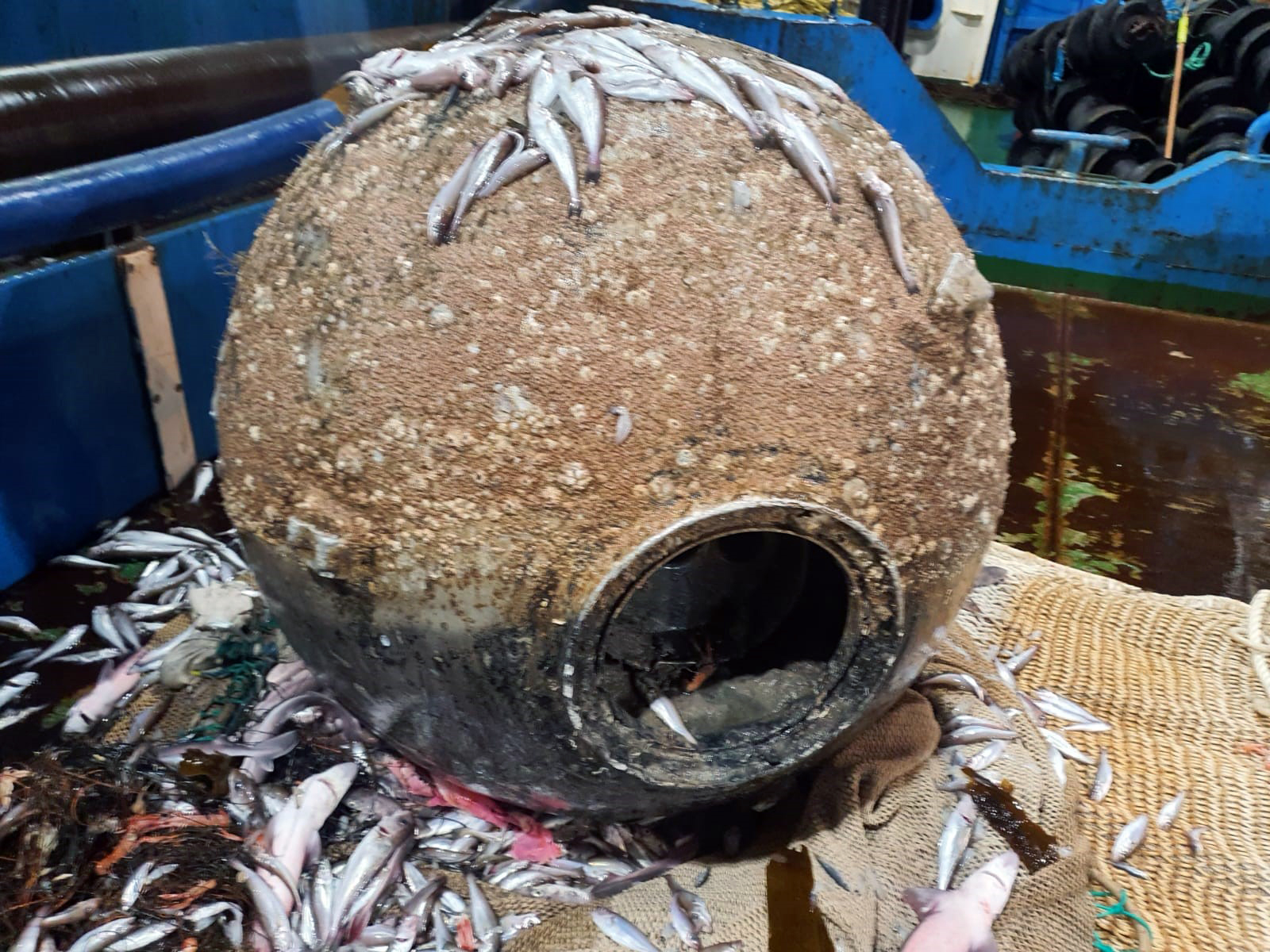Royal Navy Divers Blow Up 750-Pound WWII Mine

Royal Navy bomb disposal experts recently detonated a large WWII-era mine trawled up by fishermen in the Firth of Clyde.
The team from Northern Diving Group, based at Faslane, went into action after the wartime device – laid by a German submarine off the island of Ailsa Craig – was recovered.
The trawler’s seven crew were evacuated by the RNLI Troon Lifeboat and Rothesay Coastguard Rescue Team, and the vessel was sailed to Ettrick Bay on the Isle of Bute to meet with EOD divers. They declared the mine, which still contained around 750 pounds of explosives, to be in pristine condition and decided a controlled detonation at sea was the best solution.
They coordinated the lowering of the ordnance to the seabed off Ettrick Beach, before a controlled explosion sent it – and mud and water – high in the air.

The wartime mine - and fish - on the deck of the trawler (Royal Navy)
“Considering it had been in the water for around 80 years, the mine’s condition was remarkable,” said Lieutenant Commander Mark Shaw, Commanding Officer of Northern Diving Group. “From the initial pictures we were able to easily identify the mine type and, importantly, determine that the explosive fill was intact and therefore presented a significant hazard. The vessel was diverted to Ettrick Bay and met by my team, led by Petty Officer (Diver) Robert McCann who safely dealt with the situation.”
“Items of this size are relatively uncommon, however, the group are approaching 100 call-outs this year supporting civil authorities with all types of Explosive Ordnance Disposal, ranging from mines and torpedoes to hand grenades and improvised devices," Lt. Cmdr. Shaw added. “On average, across the UK, Royal Navy Clearance Divers are tasked once a day for EOD assistance. This highlights the remaining presence of historic ordnance. Even small items can be unstable and present an explosive hazard; carrying-out a controlled explosion is the only safe way of dealing with them and neutralising the hazard.”
The opinions expressed herein are the author's and not necessarily those of The Maritime Executive.
